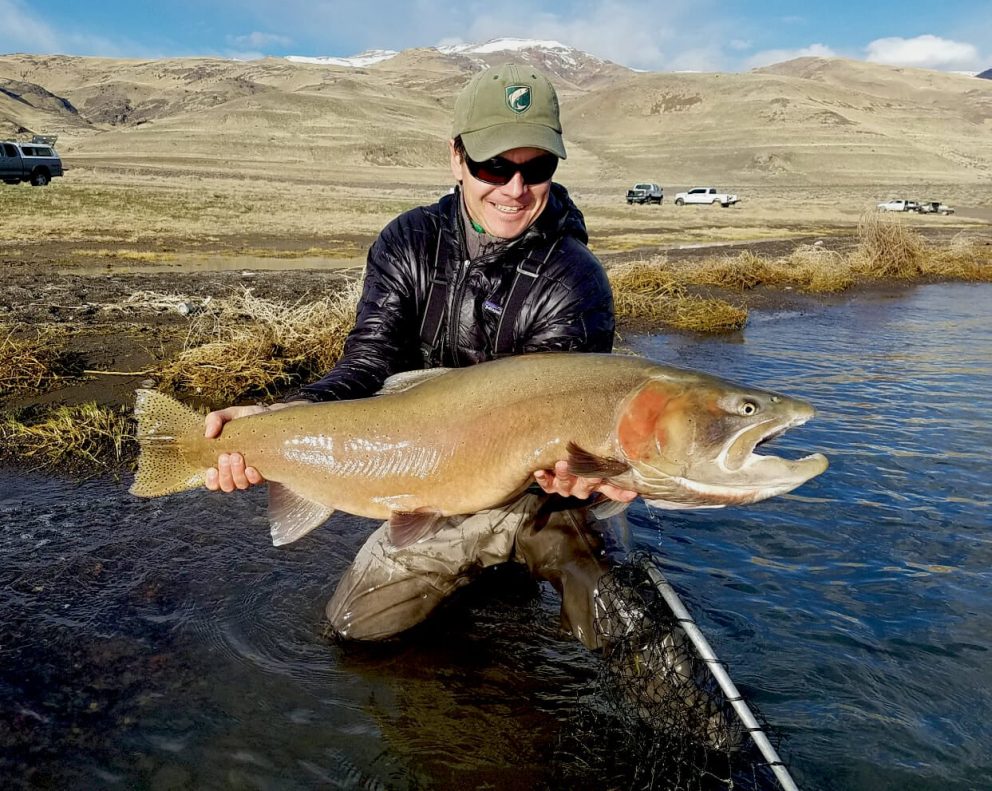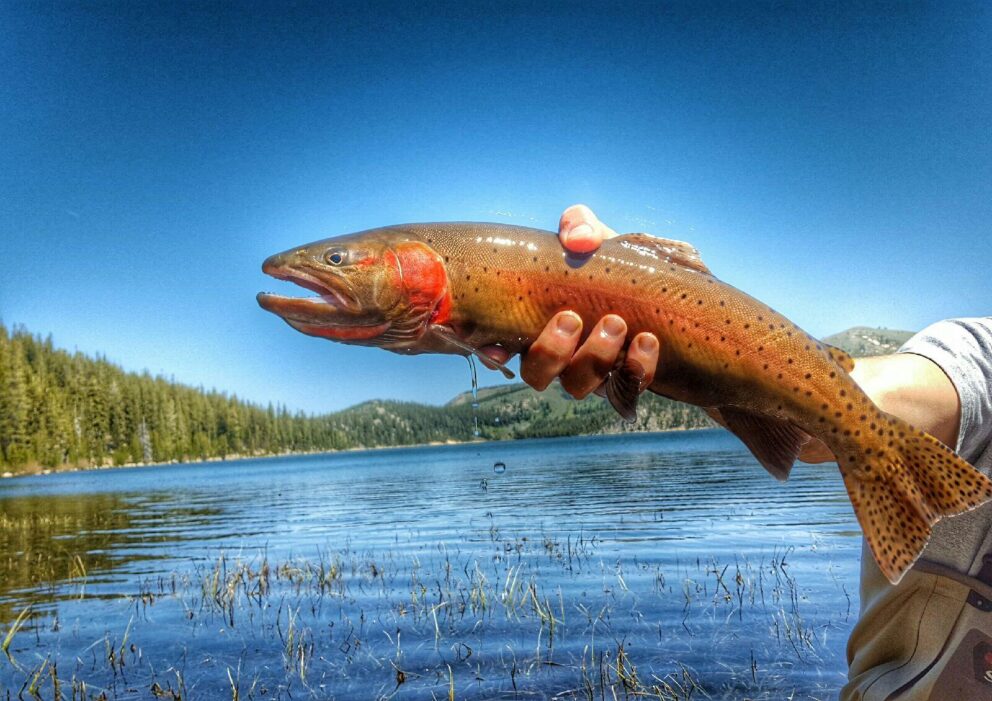- SCIENTIFIC NAME
- Oncorhynchus clarkii henshawi
- CLASSIFICATION
- Fish
- LIFE SPAN
- 5-14 Years
- SIZE
- 7-33” | 1-25lbs
- STATE CONSERVATION STATUS
-
- Priority Species
- Threatened
- FEDERAL CONSERVATION STATUS
- Vulnerable
- GAME STATUS
- Game
- Washoe
- Humboldt
- Pershing
- Churchill
- Mineral
- Lyon
- Douglas
- Carson City
- Storey
- Elko
- Lander
- Eureka
- White Pine
- Esmeralda
- Nye
- Lincoln
- Clark
Habitat & Range
The Lahontan Cutthroat Trout (LCT) is native to the Lahontan Basin of northern Nevada, northeastern California, and southeastern Oregon. Like other trout species, LCT are found in a wide variety of cold-water habitats including large terminal alkaline lakes, alpine lakes, slow meandering rivers, montane rivers, and small headwater tributary streams. There are three primary counties in Nevada containing streams where Lahontan Cutthroat Trout (LCT) concentrate; Elko, Humboldt, and Nye. Lahontan Cutthroat Trout currently occupy between 123 to 129 streams within the Lahontan basin and 32 to 34 streams are outside the basin, totaling approximately 482 miles of occupied habitat. The species is also found in five lakes, including two small populations in Summit and Independence Lakes. Self-sustaining populations of the species occur in 10.7 percent of the historic stream habitats and 0.4 percent of the historic lake habitats.
Threats
- Habitat Fragmentation
- Local extirpation may become permanent
- Migration Rates Decrease
Natural History
Lahontan Cutthroat Trout (LCT) is one of a few species of trout native to Nevada and inhabited the ancient Lake Lahontan and its tributaries during the ice ages until the lake shrank to remnants like Pyramid Lake and Walker Lake about 7,000 years ago. LTC can be found in cool flowing water with plenty of cover and stable, well vegetated stream banks. Spawning occurs between February and July and is determined by stream flow, elevation, and water temperature. Over 60% of the spawning adults will die after their first time spawning and the remaining adults will rarely spawn consecutive years.
Fun Facts














